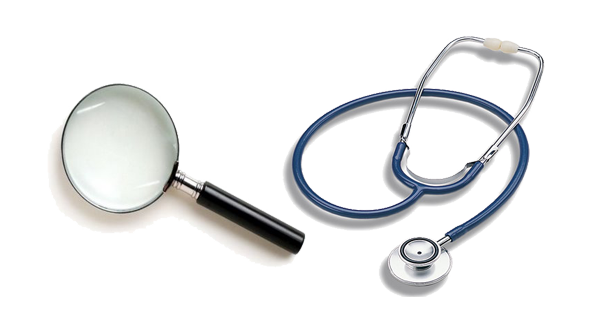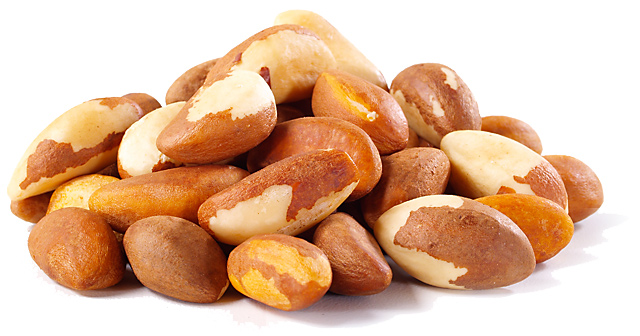In this month’s case study, Dr. Detective delves deeper into the causes of yellowing skin – and teaches us that middle-aged women are not the only ones to suffer from autoimmune hypothyroidism.
Eat less and exercise more. It’s generally a great prescription for improving health and improving body composition. However, it doesn’t always work.
Even with an awesome exercise plan and a rock-solid diet, some people suffer from mysterious symptoms and complaints that seem puzzling, given how much effort they put into their fitness and health.
When we meet clients who have problems that exercise and nutrition — not to mention their own doctors — can’t seem to solve, we know there are only a few experts on the planet to turn to. One of them is Spencer Nadolsky.
Dr. Nadolsky is a doctor of osteopathic medicine who’s also studied exercise physiology and nutrition. An academic All-American wrestler in university, he’s still an avid exerciser and brilliant physician who practices what he preaches to patients -– treating preventable diseases first with lifestyle modifications (instead of prescription drugs).
When clients have nowhere else to turn, Dr. Nadolsky turns from a cheerful, sporty doctor into a meticulous, take-no-prisoners forensic physiologist. He pulls out his microscope, analyzes blood, saliva, urine, lifestyle – whatever he has to, in order to solve the medical mystery.
When Dr. Nadolsky volunteered to work on a regular case study feature with us, we jumped at the chance. By following along with these fascinating cases, you’ll see exactly how a talented practitioner thinks. You’ll also learn how to improve your own health.
In today’s case, we meet a man who isn’t feeling so mellow about being yellow.

The client
Remember Steve, the client who was worried about his yellow skin? We discovered he’d been eating too much pumpkin and sent him merrily on his way.
Well… Steve’s back. With the same complaint.
The client’s signs and symptoms
I last saw Steve a year ago. By following my earlier advice to cut back on pumpkin, he’d regained his healthy complexion and lost the yellow tinge to his skin. But now his skin was turning yellow again.
More perplexing yet, it couldn’t be because he was eating pumpkin. In his concern about the situation, he’d gone from one can of pumpkin per week to no pumpkin at all.
You might recall that I considered Steve a bit of a hypochondriac. So I had a feeling that he might be exaggerating the situation.
But when I examined him, I saw that he was right. His skin was definitely yellow.
It couldn’t be excess beta-carotene, because he was avoiding pumpkin, carrots, and pretty well all orange vegetables.
What’s more, his lifestyle was basically identical to when I’d seen him last – except that he was now in medical school. And if he was slightly more tired than he used to be – and he was – he put that down to the extra hours he’d been studying at night.
| Signs / Symptoms | My thoughts – potential issues |
|---|---|
| Yellowing skin | We ruled out liver involvement last time. We found out he had a pumpkin obsession. We didn’t check his thyroid, which could be implicated. |
| Tiredness | Sleep deprivation likely. Could be thyroid. |
At this point I didn’t want to rerun more liver tests. I was certain that his liver wasn’t the problem.
Truth is, I still suspected he might be ingesting carotenoid somehow and just not realizing it!
But I had to examine him and ask some questions.
His physical appearance hadn’t changed much in the past year, other than the fact that he was slightly leaner.
What about dry skin, coarse hair, constipation, slow heart rate, and feeling cold? All these symptoms can suggest a thyroid problem. But Steve didn’t report any of them.
The only thing that seemed unusual was a possible delay in Steve’s deep tendon reflexes. This could be a sign of hypothyroidism, But I was skeptical about that. Generally, hypothyroidism occurs in middle aged and older women, so given Steve’s age and gender it seemed unlikely to be his problem. I didn’t notice any fullness or goiter when I felt his thyroid.
So it was a long shot – but I told Steve we’d screen for hypothyroidism.
To do this, the practitioner must check a thyroid stimulating hormone, or TSH. Sometimes I also ask for a free T4 (thyroxine) and maybe a free T3 (triiodothyronine) screening as well. T4 and T3 are the hormones that help to regulate our growth and metabolism.
This panel isn’t comprehensive, but generally it will flag a problem. In fact, most doctors will only order the TSH. As a determined detective, I opted to order a TSH and free T4.
To learn more about the thyroid and how it works, read All About the Thyroid.
The tests and assessments
Blood chemistry panel
These are Steve’s lab findings:
| Marker | Result | Lab Reference Range | Thoughts |
|---|---|---|---|
| TSH | 5.5 mIU/mL | 0.45 – 5 | Slightly high. Could be hypothyroidism or subclinical hypothyroidism. |
| Free T4 | 2.0 ng/dL | 0.9-2.4 | Higher end of normal. With this and his TSH, he has a slight subclinical hypothyroidism. |
If Steve were suffering from full-blown hypothyroidism, his tests would indicate a higher TSH along with a lower free T4. Instead, he showed higher TSH and a normal T4. This means his condition was what we call subclinical hypothyroidism.
Steve’s pituitary (indicated by TSH) wanted to get his thyroid’s attention so it would make more hormone (indicated by the T4 number). But his thyroid wasn’t listening. So the pituitary had to yell louder and louder.
For now, his thyroid was responding. But if anything were to get in the way of that – say an autoimmune disruption – then Steve would be plunged into full-blown hypothyroidism. To adopt another metaphor, he was running on an almost empty tank, with nothing in reserve.
What does any of that have to do with Steve’s main symptom – yellowing skin?
Well, just as eating a lot of orange vegetables can lead to carotenoid build-up, so can a sluggish thyroid. The metabolism slows down overall, and the conversion of beta-carotene to Vitamin A becomes more and more difficult.
That solved the mystery of Steve’s yellowing skin. But it left a deeper question: How the heck had a 25-year-old male ended up with subclinical hypothyroidism in the first place?
Years ago, Steve’s situation wouldn’t have been unusual. Back then, the most common cause of hypothyroidism was iodine deficiency (since iodine is used to make thyroid hormone and it is often lacking in our soil). Even today, idodine deficiency remains a significant health problem in other parts of the world.
But in North America, the introduction of iodized salt in the 1920s almost eliminated this problem. Today, the most common cause of hypothyroidism in the US is Hashimoto’s thyroiditis, which is an autoimmune attack of the thyroid. But Hashimoto’s is far more common among middle-aged women than it is in young men.
Now, it was remotely possible that goitrogens or flouride in Steve’s diet might be interfering with his ability to synthesize thyroid hormone. But a quick discussion about his meal plan didn’t suggest that he was eating many of the culprit foods.
So, in the end, we had to test for Hashimoto’s. We were looking for antibodies that could be destroying his thyroid.
The test results – round two
Blood chemistry panel
These are Steve’s lab findings:
| Marker | Result | Lab Reference Range | Thoughts |
|---|---|---|---|
| Thyroid peroxidase antibody (TPOAb) | 120 IU/mL | <35 | Signs of autoimmune thyroiditis. Not super high but a definite positive test. |
| Thyroglobulin antibody (TgAb) | 10 IU/mL | <20 | Normal |
Steve’s third visit
Steve’s test results meant there was an autoimmune component to his hypothyroidism.
At the word “autoimmune” his ears perked up. Suddenly, he remembered that his grandmother had something similar. Now his subclinical hypothyroidism was starting to make more sense. Autoimmune disorders often run in families.
In terms of treatment, we had a couple of options. We could start him on replacement thyroid medication or we could wait a bit to see if his were a transient condition, meanwhile making some dietary changes that might help.
Steve wanted to try dietary changes first.
First, I told him to avoid gluten. Why? Because there’s a strong relationship between celiac disease and autoimmune thyroiditis.
This wasn’t a big deal for Steve since he didn’t eat much bread and pasta.
Next I suggested he supplement with probiotics and vitamin D. I also told him to eat a few Brazil nuts each day for the selenium. Selenium has been shown to decrease TPO antibodies in those with autoimmune thyroiditis.
Unfortunately, six months of eating gluten-free and taking probiotics and vitamin D didn’t bring back Steve’s rosy complexion. Not only that, but he was more fatigued than ever.
Another check of his TSH showed that it had jumped up to 7 mIU/mL.
It was time to start thyroid replacement therapy.
The prescription
Autoimmune thyroiditis usually requires thyroid replacement, but not always.
Fix #1 – Try to eliminate triggers and supplement as necessary.
Autoimmune thyroiditis can be improved with a healthy gut. This includes removing gluten, since celiac disease can be an underlying factor in the disorder. Notice I’m not saying that everyone should remove gluten. It’s just important to be aware of the association.
Selenium supplementation with Brazil nuts can lower the TPO antibodies that destroy the thyroid gland. While there’s no proof that this will change the course of the disease, it doesn’t hurt to eat a few nuts a day, so it would be silly not to try this.

Fix #2 – Replace thyroid when necessary.
Unfortunately, Steve’s autoimmune disease wouldn’t respond to diet and supplementation alone. For this reason we decided to help out his thyroid gland by giving some outside thyroid hormone. There are several options available, but we chose synthetic thyroxine (T4).
Fix #3 – Low dose naltrexone.
Low dose naltrexone is a newer therapy that has been said to help with autoimmune disorders. But the research on this isn’t definitive and I would like to see more studies about it before I recommend it to patients.
The outcome
Two months after beginning thyroid replacement, Steve returned for follow-up. His energy levels had gone up, and his skin looked less yellow. TSH and was now 1.8 mIU/mL – much improved.
Summary and recommendations
A sluggish thyroid can hinder the body’s ability to convert beta carotene to vitamin A. This can lead to yellowing skin. If diet and supplements don’t help, hormone replacement therapy may be required.
What can we take away from Steve’s story?
- Yellowing skin has multiple causes – from serious problems like jaundice, to simple problems like over-consumption of orange vegetables. But it can also suggest a thyroid problem.
- Hypothyroidism has many different signs and symptoms. If this story or symptoms sound familiar, or you’re concerned about an autoimmune problem in general, contact your health care provider.
- Try to find the underlying cause of the hypothyroidism. If based in an autoimmune disorder, thyroid replacement therapy may be necessary.




Share